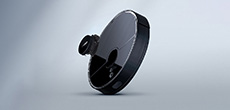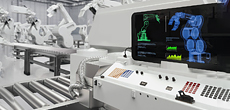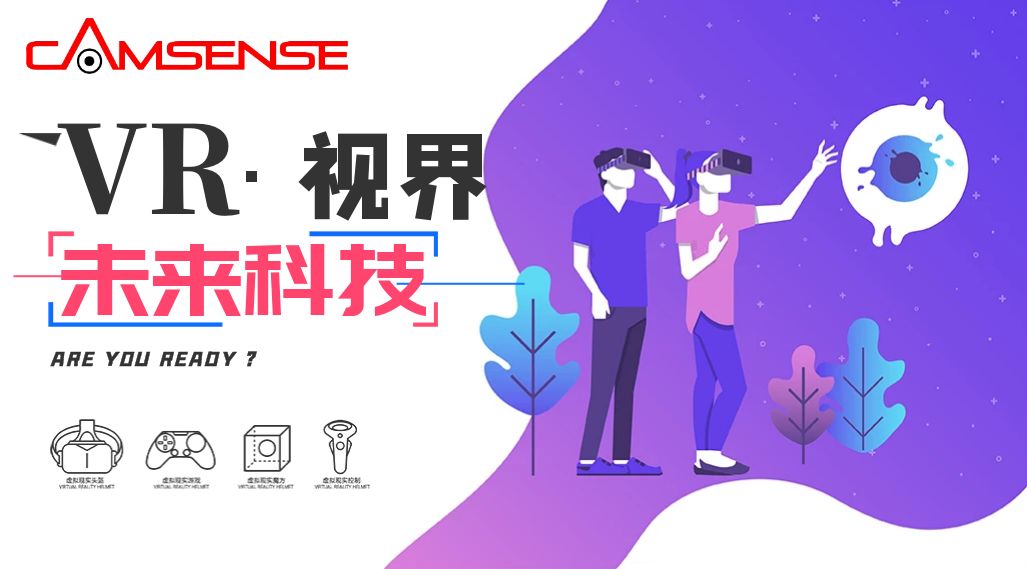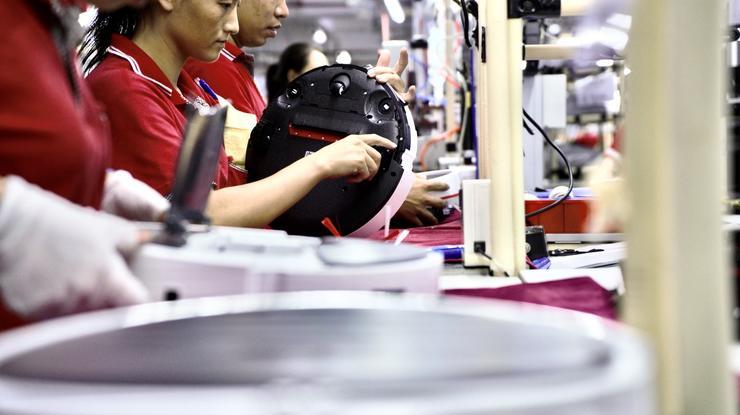
At the end of 2020, there was a news in the industry that "the chairman of a sweeping robot company in Shenzhen is squatting and guarding the upstream supply chain manufacturers to shop floors and grab goods", which has been hotly debated in the industry.
In May this year, at the Ecovacs 2020 Annual General Meeting of Shareholders, Chairman Qian Dongqi also said when answering questions from small and medium shareholders about the high market growth: "The problem of lack of cores may exist in the next one to two years."
Lack of cores has become a collective anxiety in the electronics industry, and the sweeping robot industry is no exception.
However, this shortage of cores has to start with the automotive industry.
Imbalanced Chip Supply Chain
At the beginning of 2020, a new crown epidemic swept the world, followed by various industries began to reduce production capacity expectations, especially the automotive electronics industry.
On April 8, 2020, the World Trade Organization (WTO) stated that global trade is expected to decline by 13% to 32% in 2020 as the new crown virus pneumonia epidemic disrupts normal economic activities and lives around the world, especially automotive electronics. Trade in industries with complex value chains is likely to decline sharply.
This is indeed the case. For example, most auto companies' factories in China and North America did not gradually resume production until May, while Infineon's automotive (ATV) division, which accounts for more than 40% of the auto business, saw a year-on-year decline in revenue in the first quarter of 2020. 3.31%.
Infineon officials said at the time that the main reason for the decline in the automotive business in the first quarter was the sharp decline in sales in the global automotive market due to the impact of the epidemic, resulting in a decline in the company's orders and inventory.
In such a market environment, the automotive electronics industry began to lower its expectations. At the same time, the decline in Huawei's market share in the mobile phone market caused other manufacturers to urgently stock up and prepare to divide up the market share ceded by Huawei. Few-wafer production lines are shifting from automotive electronics to producing consumer electronics chips.

Beyond everyone's expectations, in the second half of 2020, the rapid recovery of China's economy has led to a rebound in the entire automotive electronics industry. The strong demand for automotive electronics and the right to speak in the supply chain have allowed wafer manufacturers to refocus their resources on automotive chips. Supply is sloping up.
Under the dual pressure of the epidemic and supply chain shocks, the phenomenon of core shortages began to spread from the automotive industry to the consumer electronics industry, and eventually, such a wave of core shortages spread to the world and the entire industry.
Christopher, the founder of Camsense first discovered that this wave of core shortages is different from the previous periodic core shortages in September 2020. "At that time, we learned from customers that their chips were in short supply. At first, we thought it was a periodic temporary fluctuation. Even our sales staff devote part of their energy to helping customers find chips through our supply chain. During the visit and research in this process, we found that this lack of chips is different from the previous ones."
The semiconductor industry is a cyclical industry. When the market is out of stock, it often means that the capacity of the fab or packaging factory is insufficient. However, the investment cycle of semiconductors is very long. It usually takes 1-2 years to build a fab or packaging plant. During this period, there will be periodic chip shortages due to channel manufacturers stocking up and market speculation.
At that time, the fab shipment cycle has been extended from 8 weeks to 16 weeks, or even longer. For Camsense, which mainly provides lidar for cleaning robots, Christopher has made an early judgment based on the development of the industry: In 2021, the peak period for the switching of lidars in the cleaning robot industry will come. To this end, Camsense has also made preparations to increase production capacity.
Emergency Stocking Is Already On The Line.
However, Christopher is not without concerns about how much to stock up. "If we make a mistake in judgment, the cost pressure brought by expedited stocking is likely to drag us into the abyss."
In the end, after analysing industry trends, Christopher, under tremendous pressure, bought hundreds of wafers (equivalent to the raw material for millions of chips) for Camsense.
This laid the foundation for Camsense to guarantee hundreds of thousands of lidar shipments in a single month.
The awakening of consciousness of the sweeping robot and the dilemma of lack of core
What chips are the vacuum cleaners lacking in this shortage of cores?
Christopher told Leifeng.com that due to the influence of the stockpiling of mobile phone manufacturers, including the main control chip of the sweeping robot, the main control chip of the lidar, the chassis control chip, the Wi-Fi chip, the power management chip and other chips are out of stock to varying degrees. Phenomenon.
It is worth noting that this year will also be the heyday of mass application of lidar for mainstream sweeping robots.
In 2018, the explosion of lidar-navigated sweeping robots led to a barbaric growth in the market sales of sweeping robots. If the timeline is extended, the application of lidar in sweeping robots in 2018 is just the beginning.
In the next two years, 3D structured light, d-ToF and other types of lidars have been gradually applied to sweeping robots, and under the mainstream trend of multi-sensor fusion, there are signs of becoming standard for sweeping robots.
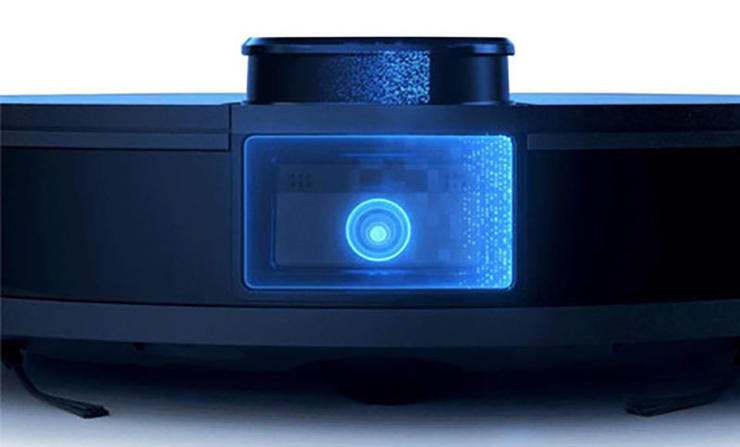
Christopher told The reporters that in 2020, a basic consensus has been formed in the industry - to do a good job of sweeping robots, lidar will be a necessary basic sensor.
According to market statistics, in 2019, the shipment of sweeping robots in China reached 5.44 million units; after this data was hit by a wave of epidemics in 2020, the market expected the data to still reach 8.82 million units.
The market trend is very good. However, this wave also affects the shortage of cores in the field of lidar, which has caused the manufacturers of cleaning robots to fall into growth anxiety.
What is the ultimate navigation solution for sweeping robots?
If we delve into the application of lidar navigation solutions on sweeping robots, it is actually earlier.
Now when it comes to sweeping robots, everyone thinks of Ecovacs and Roborock. Little-known is that most of the lidar solutions of domestic sweeping robots can be traced back to a sweeping robot manufacturer called Neato.
Neato was born at Stanford University in the United States and grew up in Silicon Valley. Since its establishment in 2005, it first obtained a patent for laser navigation in 2008, and then launched the world's first sweeping robot equipped with a laser navigation solution in 2010. At that time, The laser navigation solution for sweeping robots has become popular, and many sweeping robot manufacturers have begun to learn from the "linear laser sensor + DSP chip" laser navigation solution adopted by Neato.
The advantage of the "Linear Array Laser Sensor + DSP Chip" solution is that the required algorithm is simple and easy to manufacture. However, this solution is not without its shortcomings. Several obvious shortcomings are the reliability problems caused by the low vertical field of view and the cost pressure caused by industrial-grade linear laser sensors.
In 2017, Camsense entered the sweeping robot track. Before entering this track, Christopher had been thinking about a question: after years, what is the ultimate solution for sweeping robot lidar?
Christopher's conclusion at the time was that the market's choice would ultimately be cost-first.
To this end, when entering the field of sweeping robots, Christopher and his team had to consider another issue when they turned to research area array laser sensors with higher reliability - the issue of cost.
Area array laser array laser sensors are widely used in the field of consumer electronics, and their cost was originally lower than that of linear laser sensors. However, to study area array laser sensors, it is necessary to overcome the problems of complex algorithms and large amounts of computation that require high chip performance. If DSP is still used Chips, or even FPGA chips with higher performance, the final cost of the laser navigation solution will be higher than the cost of the "line array laser sensor + DSP chip" solution.
At that time, there was only one way left in front of Christopher: self-developed ASIC-specific chips for sweeping robots.
Make Our Own Chip
In September 2017, just three months after Camsense's internal sweeping robot lidar project, the ASIC sweeping robot-specific chip project was established.
At that time, I really made a lot of determination, because it cost several million to make a chip at a time. At that time, almost all the company's money was invested in it. Once the tape-out fails or the technical direction is wrongly judged, it will be a heavy blow.
Christopher told The reporters that that period was also the most stressful period since he started his business, and he even lost sleep all night because of it.
What Christopher was worried about did not happen. The Camsense C1 was successfully tape-out and mass-produced. The customized designs such as frame rate, resolution, and accuracy that Christopher and his team made for the field of sweeping robots were also adopted in the following years. value verified.
For example, the higher the frame rate of the lidar used by the sweeping robot, the higher the cost of the chip. If the frame rate is set too low, it will be found that it is difficult to meet the needs of the sweeping robot after a few years, and the chip will be forced to be eliminated; if the frame rate is set If the setting is too high, a few years later, it will be found that the sweeping robot does not need such a high frame rate, which will lead to waste of cost, and it is difficult for any manufacturer to pay for such a high-cost chip.
In 2017, the mainstream frame rate of lidar used in sweeping robots was 1800FPS. At that time, the company set the frame rate of Camsense C1 at 3000FPS. So far, this chip can still meet the market demand in terms of performance, while the second generation chip The Camsense C2 will also be mass-produced in the second half of this year.
With the help of "area array laser sensor + ASIC chip", Camsense has taken a different path.
This year, the entire supply chain management is indeed very difficult. On the one hand, it is necessary to ensure high delivery, and on the other hand, it is necessary to consider low inventory. This is like opening a restaurant. To ensure that customers can order food at any time, and to estimate the inventory risk.
However, under the dual insurance of early chip reserves and differentiated technology routes, Camsense is obviously easier than other peers. Even to a certain extent, Christopher, who seized the opportunity, made Camsense a rare phenomenon in the lack of cores. the winner.
Regarding the current shipment situation of Camsense, Christopher disclosed two data to The reporters:
In the past May, the delivery volume was 25W+, an increase of 700% over the same period last year.
At present, there are more than a dozen cleaning robot manufacturers that Camsense continues to ship, and more than a dozen are introducing our products, which are expected to start shipping in the second half of the year.
In the first half of the year, Camsense also received two rounds of B rounds and B+ rounds of financing, with a total financing of over 100 million yuan. Now it is continuing to recruit troops, expand production capacity, and develop new products.
The reporters: Under the current trend of sweeping robots switching lidar and the trend of lack of cores, is there any pressure to expand the team and production capacity?
Christopher's pressure is definitely there, and the key is to have an accurate judgment on the market trend.
